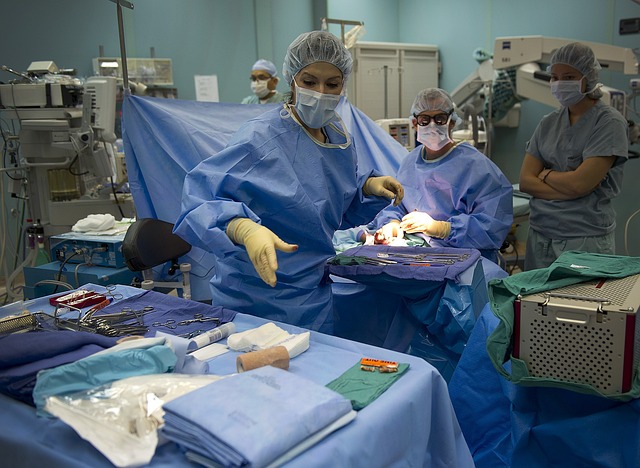
In the high-stakes world of surgery, precision and efficiency are paramount. The operating room is a controlled environment where skilled medical professionals rely on an array of specialized tools to perform intricate procedures. From scalpels to advanced imaging devices, each tool plays an important role in ensuring successful surgeries. Future surgeons must delve into the common tools used in the operating room, highlighting their significance in the medical realm. Understanding the nuances of these tools is vital for the next generation of medical professionals.
Scalpels: Precision in Incisions
At the heart of any surgical procedure lies the scalpel, a small but indispensable tool for making precise incisions. Surgeons choose from a variety of blade shapes and sizes depending on the nature of the surgery. The sharpness and accuracy of a scalpel are critical for minimizing tissue damage and accelerating the healing process. Modern scalpels often feature ergonomic handles and disposable blades, adhering to stringent hygiene standards. Mastery of this tool is a fundamental aspect of a surgeon’s skills.
Electrocautery Devices: Controlling Bleeding
In surgeries where bleeding must be meticulously controlled, electrocautery devices come into play. These instruments use electrical currents to coagulate blood vessels, minimizing bleeding during and after an operation. By simultaneously cutting and sealing blood vessels, electrocautery devices enhance the efficiency of surgical procedures. This technology has become a staple in various surgeries, from minor interventions to complex, life-saving operations. The use of electrocautery not only ensures precision but also reduces the risk of excessive bleeding complications.
Forceps: Grasping Precision
Forceps are versatile tools used for grasping, holding, and manipulating tissues during surgery. Available in an assortment of shapes and sizes, forceps serve different functions. For instance, tissue forceps are toothed for a secure grip, while hemostatic forceps are designed to clamp blood vessels. The surgeon’s ability to manipulate tissues with precision using forceps is crucial for achieving optimal surgical outcomes. A keen understanding of the diverse types of forceps enhances a surgeon’s ability to navigate various surgical scenarios.
Surgical Scissors: Cutting with Finesse
Surgical scissors are designed to cut delicate tissues with precision. With various blade shapes such as straight, curved, or serrated, surgeons can choose the most suitable scissors for a specific task. Micro-scissors, with their ultra-fine tips, are often employed in intricate surgeries requiring careful cutting. The design and functionality of surgical scissors contribute significantly to the surgeon’s ability to navigate and perform delicate procedures. These scissors, crafted for precision, are indispensable in achieving surgical success.
Retractors: Creating Space for Precision
Creating sufficient space for the surgeon to work is critical in many procedures. Retractors are instruments designed to hold back tissues and organs, providing a clear view and access to the targeted area. Self-retaining retractors, which can stay in place without continuous manual assistance, are particularly useful in lengthy surgeries. These tools contribute to the surgeon’s ability to work efficiently and minimize trauma to surrounding tissues. Proper retractor usage is essential for maintaining a clear and accessible surgical field.
Endoscopes: Navigating the Interior
Advancements in medical technology have introduced tools like endoscopes, enabling minimally invasive surgeries. These instruments consist of a flexible tube with a light and camera, allowing surgeons to visualize and operate inside the body through small incisions. Endoscopic procedures often result in faster recovery times and reduced scarring compared to traditional open surgeries. This innovation has revolutionized various medical specialties, from orthopedics to gastroenterology. The precision of endoscopic tools has transformed the landscape of surgical interventions, offering patients less invasive options and quicker recovery.
Sealant: Enhancing Closure
Over the years, surgical sealants have gained prominence as tools that aid in wound closure. These sealants, often composed of biocompatible materials, assist in creating a secure barrier to prevent leaks and promote healing. Surgeons use these sealants in various procedures, such as sealing blood vessels, repairing tissues, and reinforcing staple or suture lines. The application of these sealants contributes to improved postoperative outcomes and reduces the risk of complications. Incorporating sealants into the surgeon’s toolkit enhances the overall success of various procedures.
Advanced Imaging Devices: Precision in Visualization
In complex surgeries, where accuracy is paramount, advanced imaging devices play a significant role. Technologies like intraoperative MRI and CT scans provide real-time, high-resolution images, allowing surgeons to navigate through intricate anatomical structures with precision. This level of visualization enhances decision-making during surgery and contributes to improved outcomes, especially in cases involving brain or spinal surgeries. Additionally, 3D imaging capabilities offered by these devices provide a more comprehensive understanding of anatomical nuances, aiding surgeons in planning and executing complex procedures. The integration of augmented reality features further enhances the surgeon’s ability to overlay vital information directly onto the patient’s anatomy, providing a dynamic and personalized approach to each surgical intervention.
Conclusion
The operating room is a symphony of precision, where skilled surgeons conduct intricate procedures using an array of specialized tools. From scalpels and forceps to advanced imaging devices and surgical sealants, each instrument plays a crucial role in ensuring successful surgeries. As technology continues to advance, the tools used in the operating room evolve, contributing to improved patient outcomes and the continued refinement of surgical techniques. In this delicate dance of medicine, the harmony of these instruments is key to orchestrating a successful operation. The continuous integration of cutting-edge tools reflects the commitment of the medical field to advancing patient care and surgical excellence.


